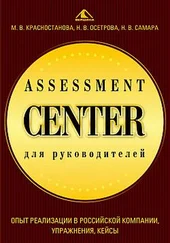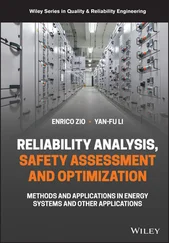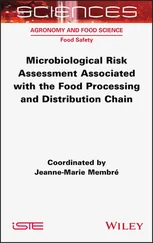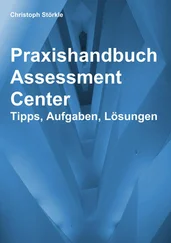Marvin Rausand - Risk Assessment
Здесь есть возможность читать онлайн «Marvin Rausand - Risk Assessment» — ознакомительный отрывок электронной книги совершенно бесплатно, а после прочтения отрывка купить полную версию. В некоторых случаях можно слушать аудио, скачать через торрент в формате fb2 и присутствует краткое содержание. Жанр: unrecognised, на английском языке. Описание произведения, (предисловие) а так же отзывы посетителей доступны на портале библиотеки ЛибКат.
- Название:Risk Assessment
- Автор:
- Жанр:
- Год:неизвестен
- ISBN:нет данных
- Рейтинг книги:3 / 5. Голосов: 1
-
Избранное:Добавить в избранное
- Отзывы:
-
Ваша оценка:
Risk Assessment: краткое содержание, описание и аннотация
Предлагаем к чтению аннотацию, описание, краткое содержание или предисловие (зависит от того, что написал сам автор книги «Risk Assessment»). Если вы не нашли необходимую информацию о книге — напишите в комментариях, мы постараемся отыскать её.
2nd Edition
The book begins with an introduction of risk analysis, assessment, and management, and includes a new section on the history of risk analysis. It covers hazards and threats, how to measure and evaluate risk, and risk management. It also adds new sections on risk governance and risk-informed decision making; combining accident theories and criteria for evaluating data sources; and subjective probabilities. The risk assessment process is covered, as are how to establish context; planning and preparing; and identification, analysis, and evaluation of risk.
also offers new coverage of safe job analysis and semi-quantitative methods, and it discusses barrier management and HRA methods for offshore application. Finally, it looks at dynamic risk analysis, security and life-cycle use of risk.
Serves as a practical and modern guide to the current applications of risk analysis and assessment, supports key standards, and supplements legislation related to risk analysis Updated and revised to align with ISO 31000 Risk Management and other new standards and includes new chapters on security, dynamic risk analysis, as well as life-cycle use of risk analysis Provides in-depth coverage on hazard identification, methodologically outlining the steps for use of checklists, conducting preliminary hazard analysis, and job safety analysis Presents new coverage on the history of risk analysis, criteria for evaluating data sources, risk-informed decision making, subjective probabilities, semi-quantitative methods, and barrier management Contains more applications and examples, new and revised problems throughout, and detailed appendices that outline key terms and acronyms Supplemented with a book companion website containing Solutions to problems, presentation material and an Instructor Manual
is ideal for courses on risk analysis/risk assessment and systems engineering at the upper-undergraduate and graduate levels. It is also an excellent reference and resource for engineers, researchers, consultants, and practitioners who carry out risk assessment techniques in their everyday work.
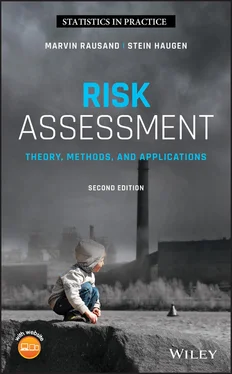
 is a number between 0 and 1 (i.e. between 0% and 100%) that expresses the likelihood that the event occurs in a specific situation, and is written as
is a number between 0 and 1 (i.e. between 0% and 100%) that expresses the likelihood that the event occurs in a specific situation, and is written as  . If
. If  , we know with certainty that event
, we know with certainty that event  occurs, whereas for
occurs, whereas for  , we are certain that event
, we are certain that event  will not occur.
will not occur. of possible outcomes, and where each outcome has the same likelihood of occurring. This is appropriate for many simple games of chance, such as tossing coins, rolling dice, dealing cards, and spinning a roulette wheel.
of possible outcomes, and where each outcome has the same likelihood of occurring. This is appropriate for many simple games of chance, such as tossing coins, rolling dice, dealing cards, and spinning a roulette wheel. is the set of all the possible outcomes. An event
is the set of all the possible outcomes. An event  is a set of (one or more) outcomes in
is a set of (one or more) outcomes in  that have some common properties. When an outcome that is a member of
that have some common properties. When an outcome that is a member of  occurs, we say that the event
occurs, we say that the event  occurs. These and many other terms are defined in Appendix A.
occurs. These and many other terms are defined in Appendix A. possible outcomes have the same likelihood of occurring, we can find the likelihood that event
possible outcomes have the same likelihood of occurring, we can find the likelihood that event  will occur as the number
will occur as the number  of outcomes that belong to
of outcomes that belong to  divided by the number
divided by the number  of possible outcomes. The outcomes that belong to
of possible outcomes. The outcomes that belong to  are sometimes called the favorable outcomes for
are sometimes called the favorable outcomes for  . The likelihood of getting an outcome from the experiment that belongs to
. The likelihood of getting an outcome from the experiment that belongs to  is called the probability of
is called the probability of  :
:
 can also be a single outcome. The likelihood of getting a particular outcome is then called the probability of the outcome and is given by
can also be a single outcome. The likelihood of getting a particular outcome is then called the probability of the outcome and is given by  .
. have the same probability of occurrence, we say that we have a uniform model.
have the same probability of occurrence, we say that we have a uniform model. . The experiment is repeated
. The experiment is repeated  times as we count the number
times as we count the number  of the
of the  experiments that end up in the event
experiments that end up in the event  . The relative frequency of
. The relative frequency of  is defined as
is defined as
 . This limit is called the probability of
. This limit is called the probability of  and is denoted by
and is denoted by 




